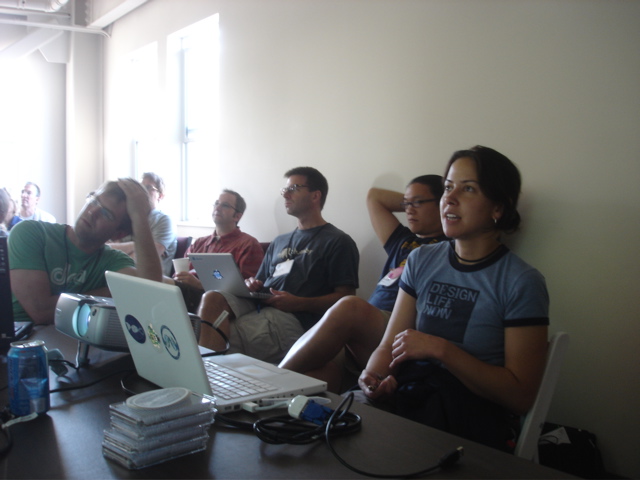June 23, 2007
Foo Camp: Synthetic Biology
Drew Endy, Christina Smolke
http://openwetware.org/wiki/Foo - get PDF of slides
engineering of genomes on scale of baker's yeast - combining dna from two different organisms
sequence fossils in human dna, of virus that infected our ancestors 5 million years ago. elements of it in our dna, not functional. because the viruses broke in different ways, they can infer what the original viruses were like - yes, they were infectious. like jurassic park, but don't need physical sample - because the material is already inside us.
logic made out of nucleic acids - works in test tubes, not cells. there is a way to do it, tho.
greenfuel - trying to put organisms to eat carbon emissions, also nitrogen emissions from factories
can make organisms that take in a signal, and self organize into shapes/patterns. can draw images out of organisms, that have been specifically engineered.
architecture project at MIT where they want to grow houses - GM trees, like weaving vines that the do in france

Christina Smolke talking about coding biology
we have technology for cutting dna, re-combining it, and writing it out. working on doing automated construction (so you don't have to keep bashing it around). Abstraction - mapping higher order constructions down to genetic code. Can do programming of biological circuits.
productivity improvements in dna synthesis and sequencing - the curves of improvement over the last decade vastly outstrip Moore's law.
all of the circuitry that has been built has been totally asynchronous - most biological systems are broad - fanout. we're starting to go for depth (a -> b -> c -> ...). Nothing clocked yet.
http://parts.mit.edu - a collection of biological parts that have been built by students. Once you due the hard part (the engineering), it is easy to manufacture -- they replicate themselves.
Running into challenges around licensing and patents.
Balance between protecting IP and supporting innovation:
- patents
- copyright
- contracts
- public domain
- sui generis - "of its own kind" - a specific system for a specific technology; new legislation
http://openwetware.org/wiki/The_BioBricks_Foundation
paper - "DNA synthesis and biological security"